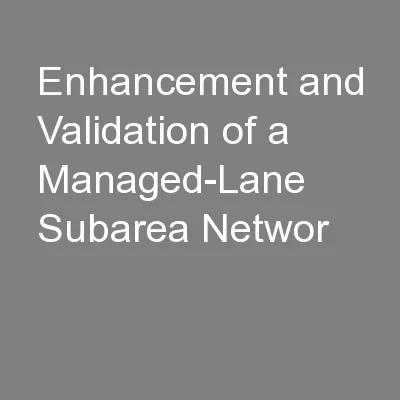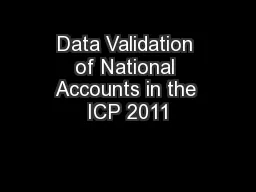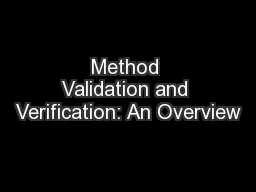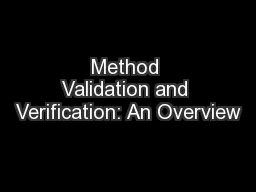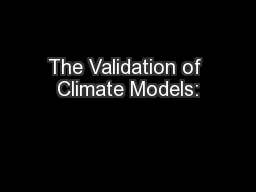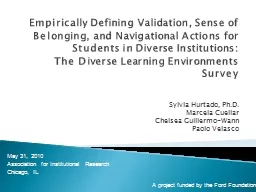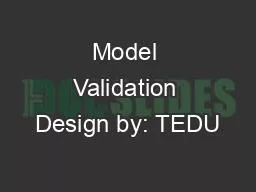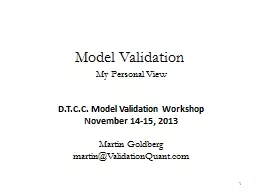PPT-x Model Risk and Validation
Author : tatyana-admore | Published Date : 2018-10-23
for Stress Testing Stress Testing Latest Developments amp Best Practice September 2728 Martin Goldberg Lead Consultant Validationquant LLC martinvalidationquantcom
Presentation Embed Code
Download Presentation
Download Presentation The PPT/PDF document "x Model Risk and Validation" is the property of its rightful owner. Permission is granted to download and print the materials on this website for personal, non-commercial use only, and to display it on your personal computer provided you do not modify the materials and that you retain all copyright notices contained in the materials. By downloading content from our website, you accept the terms of this agreement.
x Model Risk and Validation: Transcript
Download Rules Of Document
"x Model Risk and Validation"The content belongs to its owner. You may download and print it for personal use, without modification, and keep all copyright notices. By downloading, you agree to these terms.
Related Documents


